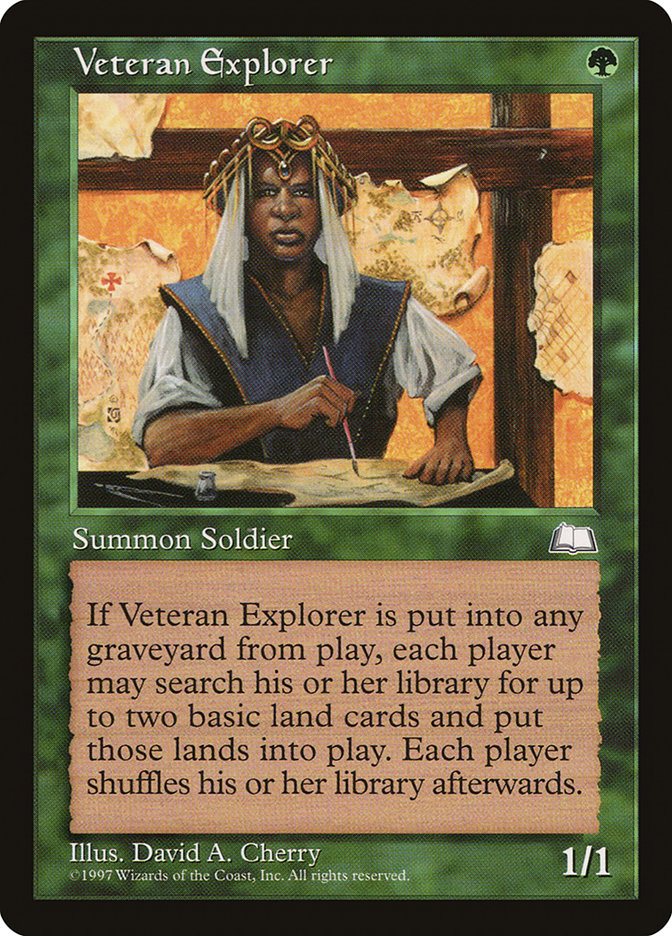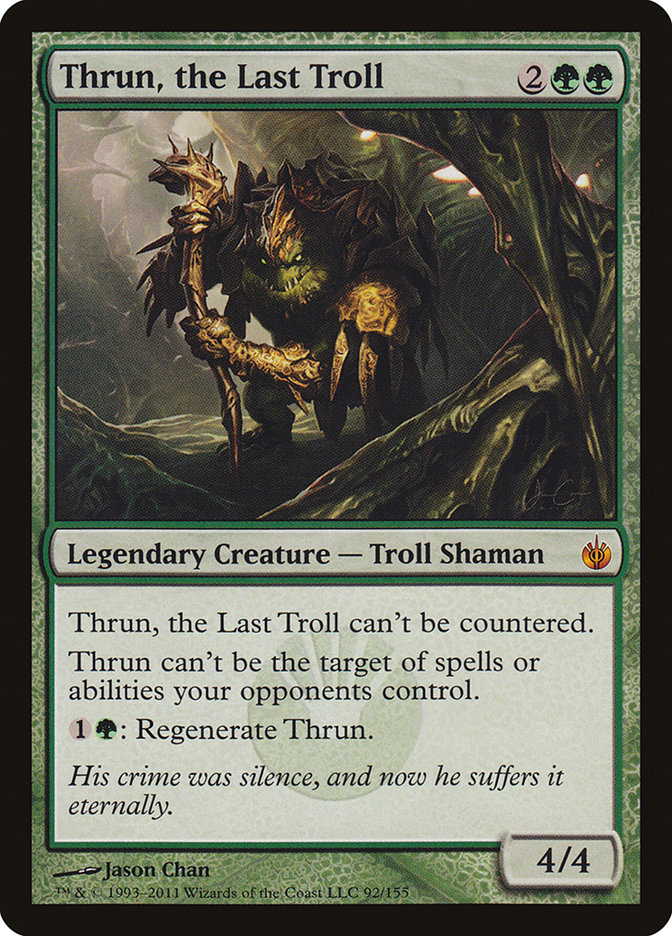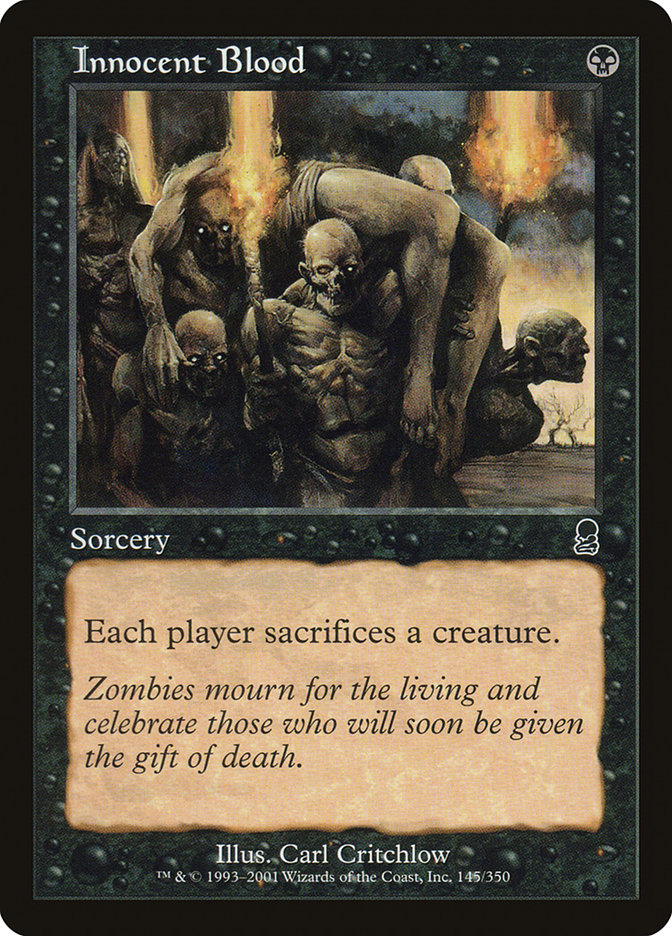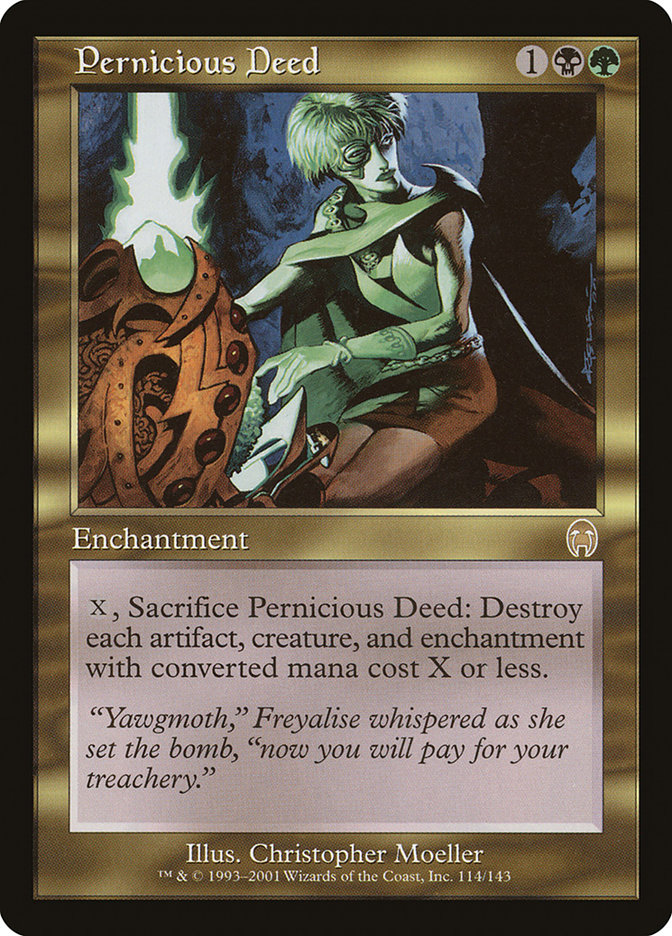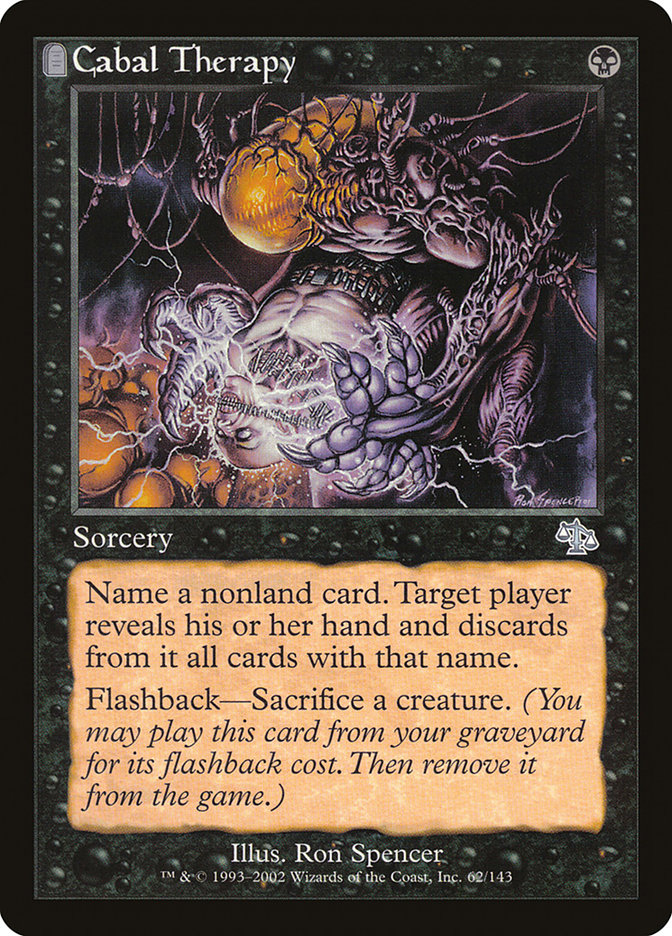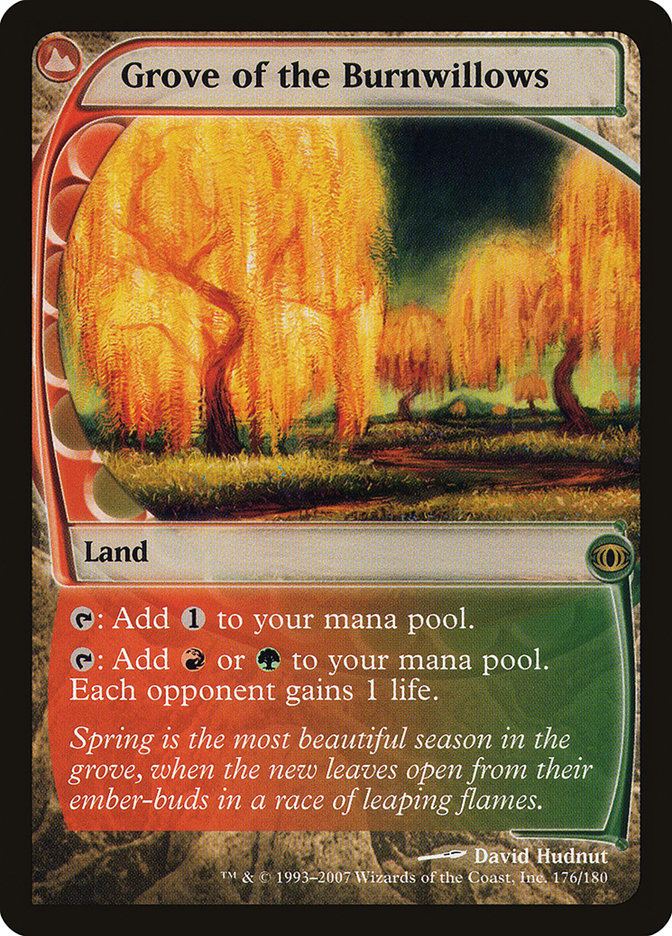This article is for all of you out there who want to cast Karn Liberated in Legacy. [Editor’s Note: You have my attention!]
If you’re the kind of person who scours new set spoilers for that magical combination of mana-fixing ramp spells, sweepers, and awesome planeswalkers, this one is for you.
If you’re sick of all these midrange decks and don’t want to read another article telling you that you have to play Delver of Secrets, Deathrite Shaman, or Preordain to beat them, this is for you.
If you just love killing creatures, this is definitely for you.
Creatures (4)
Planeswalkers (8)
Lands (24)
Spells (24)

So what does Planeswalker Control do fundamentally? And why is it good?
The first stipulation is that Planeswalker Control doesn’t try to win with creatures. One of the important tactical parts of the deck is its ability to blank a subset of an opponent’s cards. In this case, we want to blank all of their removal. You may have noticed that we are playing with four creatures.
Veteran Explorer fulfills the second role: mana ramping and mana fixing. Every planeswalker is fundamentally balanced by its mana cost. The more expensive a planeswalker is, the more powerful it is likely to be. The way to destroy that balance then is to get more lands into play in your first few turns.
Veteran Explorer is the best "honest" ramper/fixer in the format, which is to say that it actually takes lands from your deck and puts them into play as opposed to something like Dark Ritual just putting a bunch of mana in your mana pool. Since this deck is going to play a long game, it wants to have a lot of lands in play.
The beauty of Veteran Explorer is that while it is printed as a symmetrical card, there are a lot of popular decks that don’t play many—if any—basic lands. All those RUG and U/W/R Delver decks? They play one Island at best. The Shardless BUG decks might play a Swamp here and there, but they’re typically more concerned with how to get more Creeping Tar Pits into their deck. As a result, we will get to jump straight into Jace territory, leaving our hapless opponent back in Tarmogoyf territory.
Let me frame Veteran Explorer a little differently. Imagine that you’re building a Landstill deck: multiple colors, lot of removal, some card draw, and some Jaces to kill them. You keep losing to midrange decks and Delver decks. Why?
You know that you can outdraw the midrange decks with Ancestral Vision, Standstill, or Fact or Fiction. You know that you can grind the Delver decks into the dust. Why isn’t this working then? What’s wrong with your deck?
You play a bunch of games against Shardless BUG and Delver decks, and you start to notice something. You keep losing to Deathrite Shaman’s early mana acceleration and midgame Ancestral Visions. You eventually lose to a Tarmogoyf after drawing and casting three of your four Swords to Plowshares.
Against the Delver decks, you lose to Daze. A lot. You might kill their Delver sometimes, but you lose to Wasteland and Stifle a bunch. You get killed by Geist. You get color screwed, passing turns back with Mishra’s Factory in play and eventually getting it Lightning Bolted. It feels like a different thing every time, but you always end games with four or five cards in your hand. "If only I had more time," you think to yourself.
This is a control deck that values mana over raw card advantage. Think back to the end of the last Standard format, where Jund and U/W/R Flash were the two best decks. Who won the battle of Farseek versus Sphinx’s Revelation? In the end, it was Farseek because getting ahead on mana gives you access to a better game plan. I believe that Veteran Explorer is Legacy’s Farseek.
You may have noticed that Veteran Explorer doesn’t kill itself. That task is left to us (and sometimes a very charitable opponent). Here is where our deck diverges from something like, say, Caleb Durward’s Nic Fit deck:
Creatures (16)
- 1 Wall of Blossoms
- 2 Eternal Witness
- 4 Veteran Explorer
- 1 Deranged Hermit
- 1 Kitchen Finks
- 1 Wickerbough Elder
- 2 Grave Titan
- 2 Thrun, the Last Troll
- 2 Scavenging Ooze
Planeswalkers (1)
Lands (22)
Spells (22)

As you can see, Veteran Explorer has been around for a while, but it has always been employed by those who want to play a lot of creatures.
We don’t want to play a lot of creatures. Creatures are the worst. Planeswalkers are the best. I mean, really, you have a choice:
Are you a bigger fan of Jace or Thrun?
It’s a no-brainer.
So how do we kill our Veteran Explorer? Well, like any good control deck, we want a one-mana removal spell, right? And (spoiler alert) we don’t want to play white for Swords to Plowshares. We definitely want to be black since all of the ways to kill our own Explorer with added value are black. What’s the best removal spell for us?
Innocent Blood is incredible in this deck. It kills your Veteran Explorer, it kills their creature, it’s only one mana, and it works against Nimble Mongoose and Emrakul, the Aeons Torn. We definitely want to play four. After all, since we aren’t playing a lot of blockers, we have to play that much more removal to make sure that we can protect our planeswalkers.
How else can we kill our Veteran Explorer? Caleb’s deck played Pernicious Deed and Cabal Therapy, both of which I like.
Pernicious Deed is particularly good right now, as it’s a versatile answer in a format with a lot of permanent-based threats. Deed kills everything from Counterbalance and a host from Entreat the Angels to Young Pyromancer plus entourage and a whole mess of Elves. It is very possible that Pernicious Deed is the best sweeper that the game has seen—it requires some investment up front, but it’s a very flexible instant-speed Akroma’s Vengeance from then on. An added bonus? Pernicious Deed was printed so long ago that it doesn’t touch your planeswalkers.
Cabal Therapy is a weird card to advocate in a deck with only four creatures, but it’s a card with a lot of functions. Early on, you can cast it, name Stifle if you’re playing against a Delver deck, and then sacrifice a Veteran Explorer—using the trigger that you just protected—and take their best card.
Later on, you can use Therapy as a combo with Jace, the Mind Sculptor to kill their creatures. It sounds pretty ugly, but it works.
Against combo decks, you want something like Therapy in game 1 so that you aren’t just letting them goldfish you. A well-timed Therapy can bridge into Liliana and Jace and (hopefully) lock them off of action.
To be perfectly clear, you’re a huge underdog in every game 1 against combo, but Therapy gives you more of a chance. That it also lets you trigger Veteran Explorer is a big deal. You will cut your Therapys against creature-heavy decks since you want to load up on more reliable answers after sideboarding. It’s like Reid Duke said—in matchups that come down to topdecking a lot, you don’t want discard spells in your deck. When you need to peel a removal spell, you’ll hate seeing a Cabal Therapy in your hand.
Now that we have enough bullets to kill our Veteran Explorer, let’s discuss how to kill all of their creatures. Innocent Blood and Pernicious Deed aren’t enough. I want something that will get us ahead of creature decks by not costing us a card that can also kill Deathrite Shaman in a timely fashion. This slot used to be something like Darkblast, but that card was put out of business by Deathrite Shaman’s second point of toughness. Once a proud slayer of Noble Hierarchs, Darkblast has become too narrow for the format.
Fortunately, there’s a card that’s way better than Darkblast that we can play. It’ll just require that we play another color.
The Grove of the Burnwillows + Punishing Fire combo is excellent right now. More and more decks rely exclusively on small, targetable creatures and planeswalkers to win games. Punishing Fire tears apart Delver of Secrets; Deathrite Shaman; Dark Confidant; Young Pyromancer; Jace, the Mind Sculptor; and Shardless Agent. In doing so, it clears the way for Innocent Blood to snag their Nimble Mongoose or Tarmogoyf—the larger threat that Punishing Fire can’t kill.
The reason why we want three Punishing Fires instead of four is that the diminishing returns on the card are fairly severe—a second copy has value beyond the first only if you have a ton of mana and one Grove of the Burnwillows. If you have the ability to return the same Punishing Fire multiple times, a second copy does very little. For that reason, I want to play four Groves and only three Fires.
We have a strong shell for our deck so far. We’re playing with a basic-heavy manabase headlined by Veteran Explorer and a huge removal suite featuring a curve of Innocent Blood, Punishing Fire, and Pernicious Deed. Right now, that makes us a Jund deck. If our goal is to play a bunch of awesome planeswalkers, though, do we want to add blue?
There are two arguments for adding blue: Brainstorm and Jace.
Brainstorm’s power is well known. This is a deck with a huge manabase, so having a card that lets us dig deep for spells and shuffle lands back into our library is especially powerful here.
Jace, the Mind Sculptor’s power is also well known. As far as planeswalkers go, Jace is the best of the best. He stabilizes the board, he wins games against creatureless decks faster than anything else, and he can act as disruption if you attack their hand with Cabal Therapy. I can’t imagine playing Planeswalker Control without Jace.
Adding blue would also allow us to play Gitaxian Probe, which combines nicely with Cabal Therapy. I’m genuinely unsure of whether I would rather have Gitaxian Probe or Thoughtseize (or Inquisition or Duress) in the deck. Gitaxian Probe is a low-impact card, but it is important for its ability to give us information while also developing our game plan. We only want so many dead draws in the midgame, and we want to have cards that dig us to our planeswalkers. For now, I want Gitaxian Probe, but I’m very interested in hearing arguments for a card to replace it.
All of these choices leave us with just a few slots remaining. I know that we want Liliana of the Veil in our deck since we’re soft to combo and she’s a Disrupting Scepter. I’d like another way to dig for action in the deck, and Sensei’s Divining Top is a fine one-of in a deck that shuffles this much.
Finally, we have one more slot. It took a long time to settle on this card, and I’m not at all sure that it’s correct. This slot has to be our inevitability. It has to exist in our deck so that we have some trump to draw to in long games. It has to create a huge effect. It can’t be something as meager as Grave Titan—we can’t afford to have our top-end card get neutralized by Swords to Plowshares.
It also can’t be something like Worm Harvest since we want all of our lands in play for Punishing Fire.
It can’t be something too small like Thrun.
I considered Kozilek and Ulamog, but again, Swords to Plowshares and our own Innocent Bloods are problematic.
I think the best card for this slot is Karn Liberated.
Karn immediately answers a problem permanent. Given a few turns, he empties their hand. If we’re at a dangerously low life total, he can exile a redundant planeswalker from our hand and restart the game with Jace or Liliana in play.
In super long games, we can probably afford to play around Spell Pierce and Daze. After a point, any Dazes or Spell Pierces will have gotten discarded or used. Karn is scheduled to show up after that point.
Besides, an important factor to consider is how much fun you’re having with Planeswalker Control in Legacy. Is anything more fun than Karn?
Okay, Nicol Bolas maybe, but Karn restarts the game with a planeswalker in play. Nicol Bolas just super-duper Cruel Ultimatums them. Cool, but not as much fun as getting to play even more Magic.
So, once again, that brings our list to:
Creatures (4)
Planeswalkers (8)
Lands (24)
Spells (24)

The mana base for this deck also had to go through a lot of tweaking. Here are the important things to keep in mind:
- We have to have black on turn 2 for Innocent Blood and Cabal Therapy.
- We have to have green on turn 2 for Veteran Explorer + one of the aforementioned black cards.
- We have to have double black on turn 3 for Liliana of the Veil.
- We have to have double blue on turn 4 for Jace, the Mind Sculptor.
- We have to have a lot of red throughout the manabase for Punishing Fire recursion and recasting.
- We have to have a lot of basic lands to get with Veteran Explorer.
- We have to have enough dual lands of the right types to get in the early game so that we’re not color screwed.
This is going to be a pretty stringent manabase. Two things are clear from the outset—we will not be maxing out on our dual lands, and we will not be playing any colorless lands. Phyrexian Tower, while good in creature-heavy lists, is not what we want here.
Let’s figure out the basic lands first. We want to be able to fix our mana for any one card with Veteran Explorer.
Do we have a UU card? Yes, we have Jace.
Do we have a BB card? Yes, we have Liliana.
Do we have a RR card? No, but we have Punishing Fire.
Do we have a GG card? No, our green cards are Veteran Explorer and Pernicious Deed.
How many basic lands do we want total? We don’t want three of any one basic land, as our mana for a given color will be fine with two in play. We want to be able to trigger Veteran Explorer twice, and it’s very possible that we draw three basic lands out of six-to-eight total in the first few turns.
I want to play seven basic lands. Since we don’t need to mana fix green as heavily, we can mark down our basic counts as two each of blue, black, and red and then one green.
Our four Grove of the Burnwillows are already set aside.
With eleven lands already set in stone, we should ask ourselves how many lands our deck needs. Most Jace decks run 22-23 lands, but we’re also playing Punishing Fire and Karn Liberated. We don’t want to miss a land drop in the first few turns. Let’s play 24 lands and be open to adjusting up to 25 if need be. That gives us thirteen more lands.
All of these thirteen lands will be fetch lands or dual lands. We don’t want any lands coming into play tapped, and we already have a great mana sink in Punishing Fire.
We want to be able to shuffle away our Brainstorms a good percentage of the time, and the time-honored minimum number of fetch lands for a control deck with Brainstorm is eight. People have started playing ten to twelve in the Deathrite era, but eight was the industry standard before then, which you can see that reflected in RUG Delver’s mana base—it hasn’t changed one iota since the Canadian Threshold days of 2009.
It doesn’t make sense to pick our fetches before we pick our five duals. What should our dual lands be? For that answer, we’ll need a count of colors just like we did with Pyromancer Opposition.
Gerry’s Shardless BUG deck from Somerset had sixteen untapped black sources in it for Thoughtseize, Hymn to Tourach, and Liliana of the Veil. We can probably shave one of those, but I wouldn’t be comfortable going below that. Assuming that all of our fetch lands get black mana, we have eight fetch lands, two basic lands, and five other cards that have to make black mana. This is easy—all of our duals have to make black.
What should the secondary colors be on our dual lands? If we have just one green dual, our green count is eight fetches + one dual land + four Groves + one basic Forest = fourteen, which is enough to cast Veteran Explorer on time. Ergo, one Bayou, four duals remaining.
We know that Punishing Fire is important to recur and cast. What does a Punishing Fire mana base look like?
Creatures (23)
- 4 Mother of Runes
- 1 Birds of Paradise
- 1 Scryb Ranger
- 2 Aven Mindcensor
- 1 Tarmogoyf
- 1 Gaddock Teeg
- 3 Noble Hierarch
- 4 Knight of the Reliquary
- 2 Qasali Pridemage
- 3 Stoneforge Mystic
- 1 Scavenging Ooze
Lands (24)
Spells (13)

It’s a little outdated as a deck, but the mana base is what I want to look at. Gerry has three Groves, seven fetches, and two Taigas along with a single Birds of Paradise. The Birds is important to note because he’s playing it over his fourth Noble Hierarch—its existence as a red source was an important part of why it made the cut.
Since we’re playing with four Groves, it makes sense to add another hard red source to the equation—the extra fetch land is just gravy. That means that we want four actual cards that tap for red mana. If we have two basic Mountains, we need two Badlands to properly supplement our Punishing Fires engine.
With two black dual lands left, it becomes elementary to fill them in as two Underground Seas.
Our mana base sans fetch lands:
4 Grove of the Burnwillows
2 Island
2 Mountain
2 Swamp
1 Forest
2 Underground Sea
2 Badlands
1 Bayou
The mana counts that I mentioned are not accurate. They’re optimistic. They’re mana counts in a world where every fetch land gets every type of land. Some of them will have to come down. Here are our optimistic mana counts:
Black: 15 (eight fetch, five dual, two basic)
Red: 16 (eight fetch, four Grove, two dual, two basic)
Blue: 12 (eight fetch, two dual, two basic)
Green: 14 (eight fetch, four Grove, one dual, one basic)
We are willing to sacrifice some access to red mana and some access to green mana since we’re light on blue sources as it stands and we’re a black-heady deck.
Since any black fetch gets all of our black duals (and thus all of our colors), it makes sense to play eight black fetches. The secondary colors are likewise fairly straightforward—we want to maximize blueness and split the losses between red and green.
Therefore, we want four Polluted Deltas, two Bloodstained Mires, and two Verdant Catacombs.
The sideboard for this deck is far easier than the one for Pyromancer Opposition. Since this deck is so bad against combo, a significant part of our sideboard should have real game text against Storm, Show and Tell, and similar decks.
We don’t want to pick our sideboard cards in the same way that we built the Affinity sideboard. There, we wanted every card to be a knockout punch. If they couldn’t beat that exact card, they would lose.
We chose that strategy because our linear aggressive strategy gave our opponents very few turns to find an answer to a card that completely shut down their game plan.
This deck’s clock is glacial. As a result, we need to fight them on every possible front. We can’t just have Mindbreak Trap in our deck and think that we’re all set against Storm. Our deck gives Storm an incredible amount of time to set up. We need to disrupt them early, tax their resources on an ongoing basis, and present an entirely different disruptive element in the mid-to-late game that forces them to spend resources (that they may not have) to answer it.
Here is my current sideboard, for reference:
2 Red Elemental Blast
2 Swan Song
2 Arcane Laboratory
3 Golgari Charm
1 Slaughter Games
1 Garruk Relentless
1 Ashiok, Nightmare Weaver
1 Perish
1 Engineered Plague
1 Surgical Extraction
Some of these cards are intuitive—you want Red Blasts against decks with a lot of cantrips and blue-heavy control. You want Swan Songs against decks that cast sorceries, instants, and enchantments. You want Arcane Laboratory against combo decks. You want Engineered Plague against decks with lots of small creatures that share a creature type. You want Perish against decks with green creatures. You want Surgical Extraction against decks that lean on exactly one card. You get what’s going on here.
Golgari Charm is a more versatile card, and that’s by design. There was a point at which I realized that the deck wanted another way to hurt both Show and Tell and Elves (and other nuisance decks, like Death and Taxes and Goblins).
The one-ofs are there for their diverse functionality. Since this deck is going to see a lot of cards with Brainstorm; Gitaxian Probe; Sensei’s Divining Top; and Jace, the Mind Sculptor, I want to play cards that do different things. If we have three of one effect and four of another, it doesn’t really matter that we see half our deck over the course of the game—we’ll just see redundant copies of our sideboard cards. By diversifying, we can present a bunch of different points of disruption, any one of which may topple our opponent’s game plan.
Slaughter Games is a great example of this. We don’t want to play three of these, but if we can Slaughter Games our opponent’s Omnisciences before they get one into play, they won’t be able to cast Emrakul or Release the Ants. Against Storm, we can Slaughter Games Tendrils of Agony and either win on the spot or make them beat us with Empty the Warrens.
Garruk Relentless used to see a decent amount of play as a trump against BUG Midrange decks. He couldn’t be Abrupt Decayed, and no BUG deck played fliers or direct damage. He would churn out an endless stream of 2/2 Wolves, eventually overwhelming the opponent’s board presence. I want to use him in a similar fashion here, except he will also shoot down Pyromancers, Delvers, and Dark Confidants. The diminishing returns on a four-mana planeswalker are steep, but having exactly one Garruk is a nice asset in some matchups.
Ashiok is a different story. I want Ashiok against combo and control decks for the threat of its -10 ability. Since our deck can’t really clock an opponent too well, I want Ashiok to tick up, up, up until our opponent experiences an Identity Crisis. It remains to be seen what Ashiok can do elsewhere in the format, but I’m willing to acknowledge that I missed this three-mana planeswalker’s potential at first glance. Given how much removal we have to protect Ashiok, though, this will be a good home for the fifth three-mana planeswalker in Magic’s history.
Against Storm, we want the Red Elemental Blasts, Swan Songs, Arcane Laboratorys, Slaughter Games, Ashiok, and Surgical Extraction. That’s nine cards. We have more than nine pieces of dedicated creature removal in the maindeck, so how do we prioritize what comes out?
Innocent Blood is the worst of our creature removal—all of our removal can kill our own Veteran Explorer, but this does nothing beyond killing our Explorer. No good.
Pernicious Deed can be good alongside Liliana of the Veil. If we start pressuring their hand, they might play out an artifact or two and try to cantrip into a Hellbent Infernal Tutor. If we Deed away their artifacts before that happens, we can lock them out.
Punishing Fire pressures their life total and also synergizes with Liliana, this time by protecting our hand from the symmetrical +1 effect. If we have Punishing Fire, Liliana functions as an actual Disrupting Scepter in conjunction with Grove of the Burnwillows.
It makes sense to have a mix of the two. If we need to cut five of the seven Deeds and Fires to get to nine cards, I would like to have one of each remaining.
Against Show and Tell, I want all of the aforementioned disruption plus the three Golgari Charms. This means cutting the last Punishing Fire and Pernicious Deed along with the Karn. Since we’re going to have a lot of instant-speed disruption, we’ll never want to tap out for Karn. Our Explorers are going to give our opponent lands, so cutting off their mana is unrealistic. At best, Karn will be a seven-mana Raven’s Crime. We can do better against Show and Tell.
Against aggressive and tempo decks, cut some number of Gitaxian Probes and Cabal Therapys for more removal spells. Cut Probes first since Therapy can both kill a creature that Jace has Unsummoned and sacrifice Veteran Explorer to ramp in the early game.
I will reiterate—this deck is not favored against combo decks. It is a heavy favorite against all flavors of Delver tempo and Deathrite Shaman midrange, but if you live in a place like Southern California where half the tournament could be playing Show and Tell or Lion’s Eye Diamond, this isn’t a great pick.
On the other hand, if everyone is just playing more expensive Standard decks with no basic lands and tons of creatures and attacking and blocking, I suggest Jaceing and Karning them into the dust.
It is tremendously satisfying.
I’ll be back next week with some videos of this deck in action. I’m interested in whether you would rather see this deck in a Daily Event or pitted against specific decks. If you prefer the latter, which decks would you want to see me play against?
Given that next week marks one month before Grand Prix Washington DC, I’m also curious as to what I could be doing that provides you with the most value in preparation for the event. This format clearly provides a lot of you with entertainment and deckbuilding insight, but is there something else that you would rather have in the weeks leading up to a Legacy Grand Prix? Let me know in the comments or on Twitter!
Until next week,
@drewlevin on Twitter

